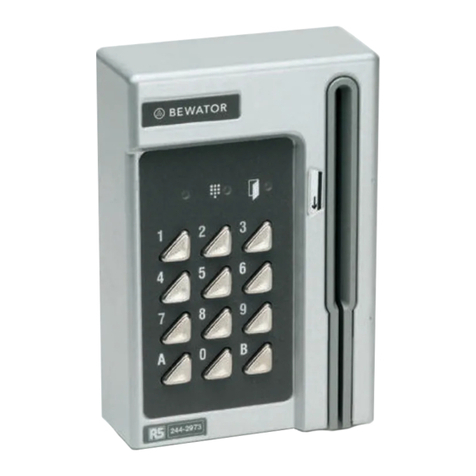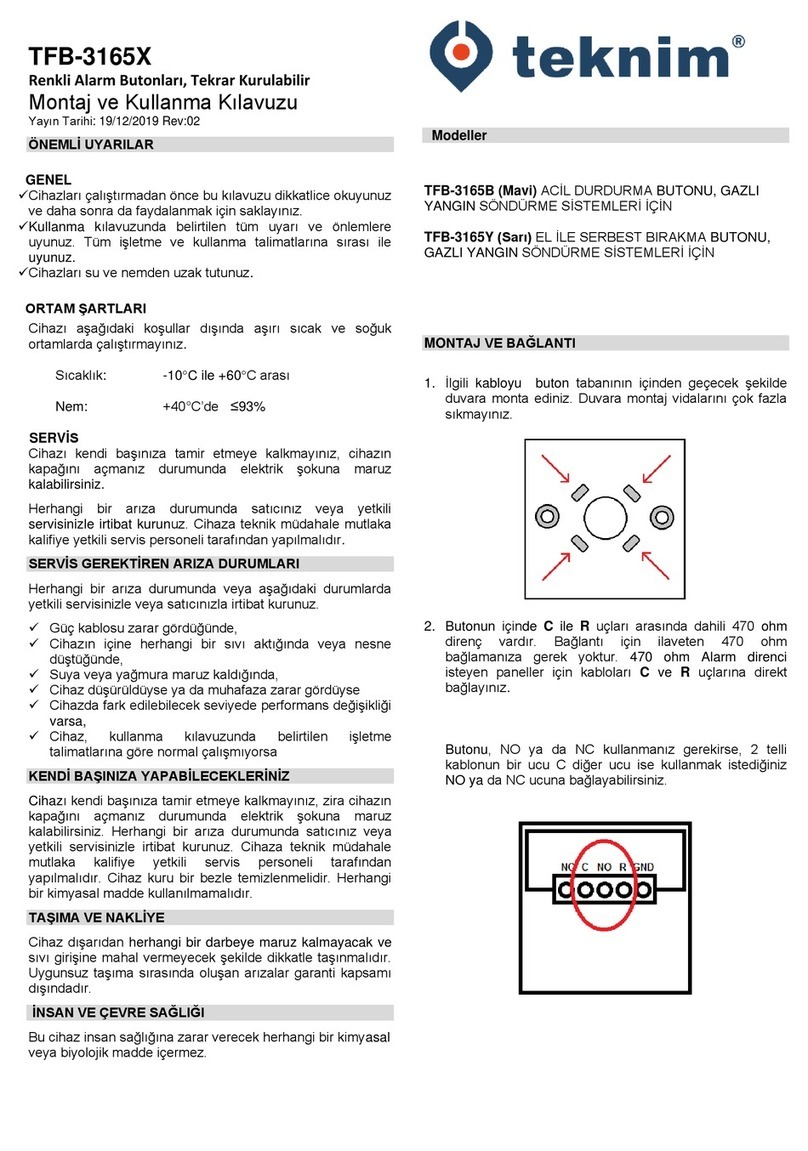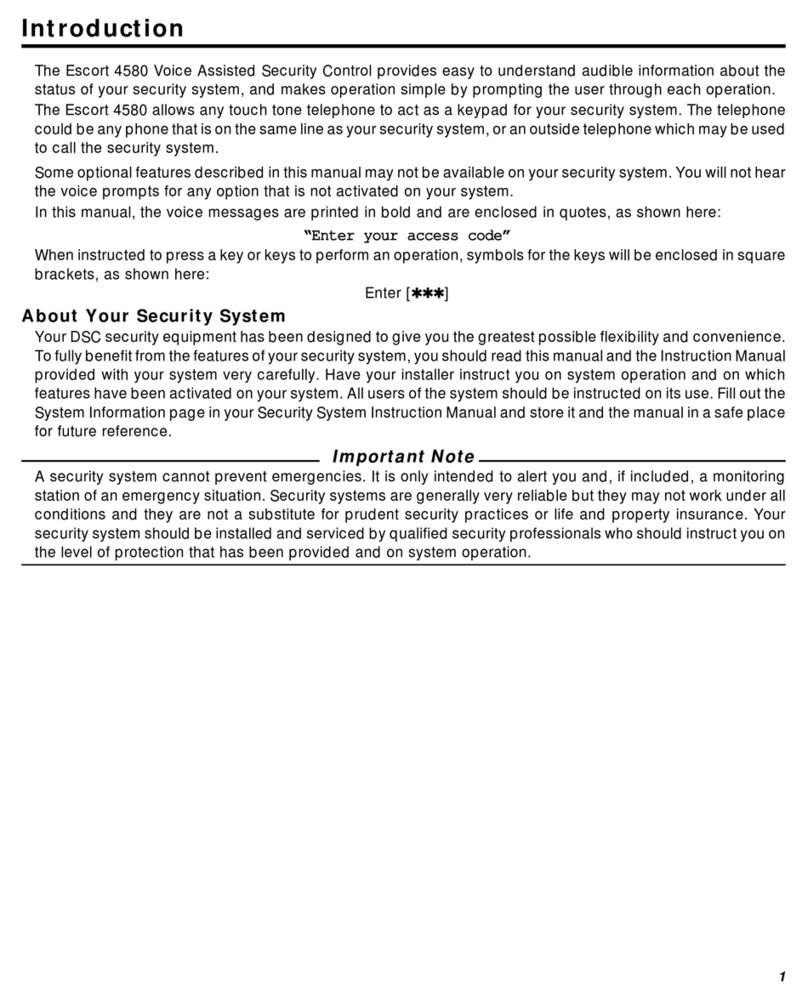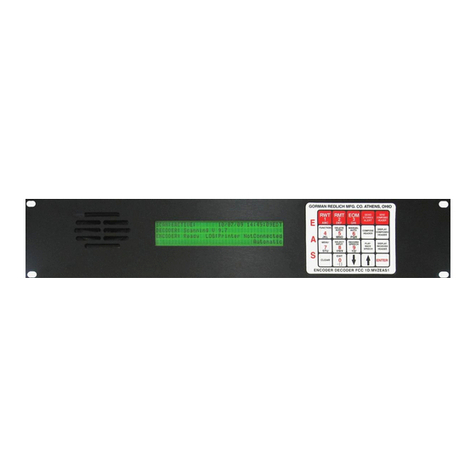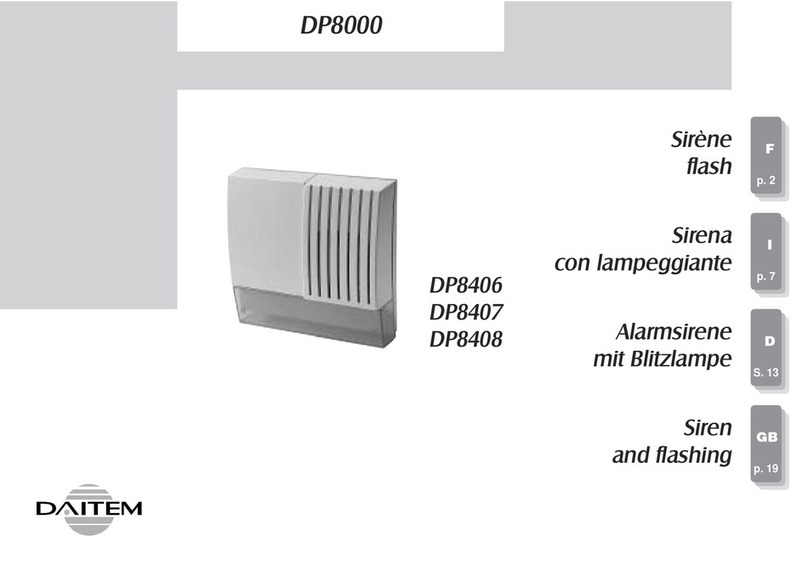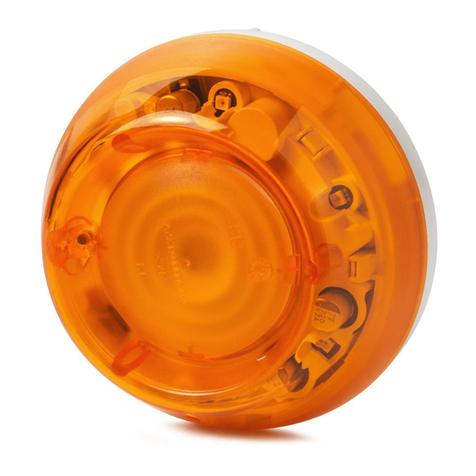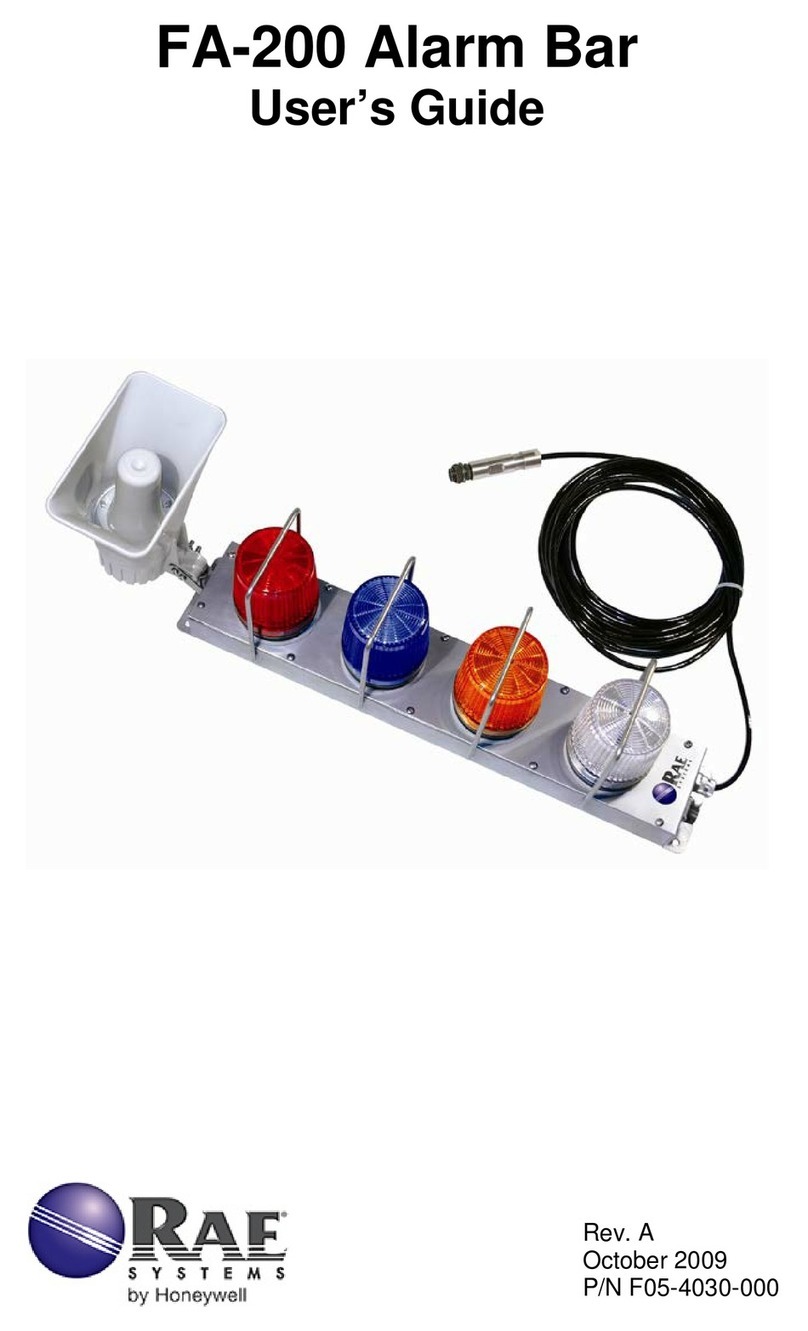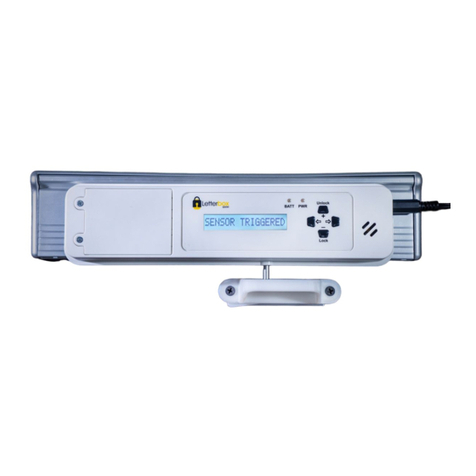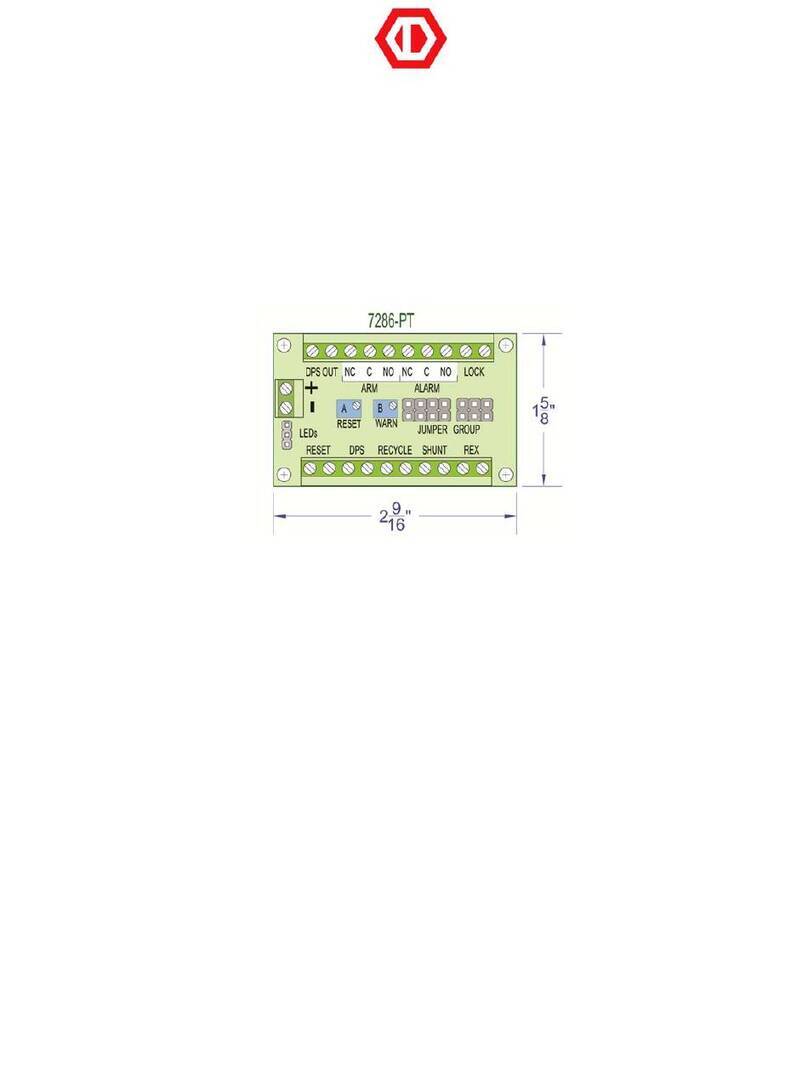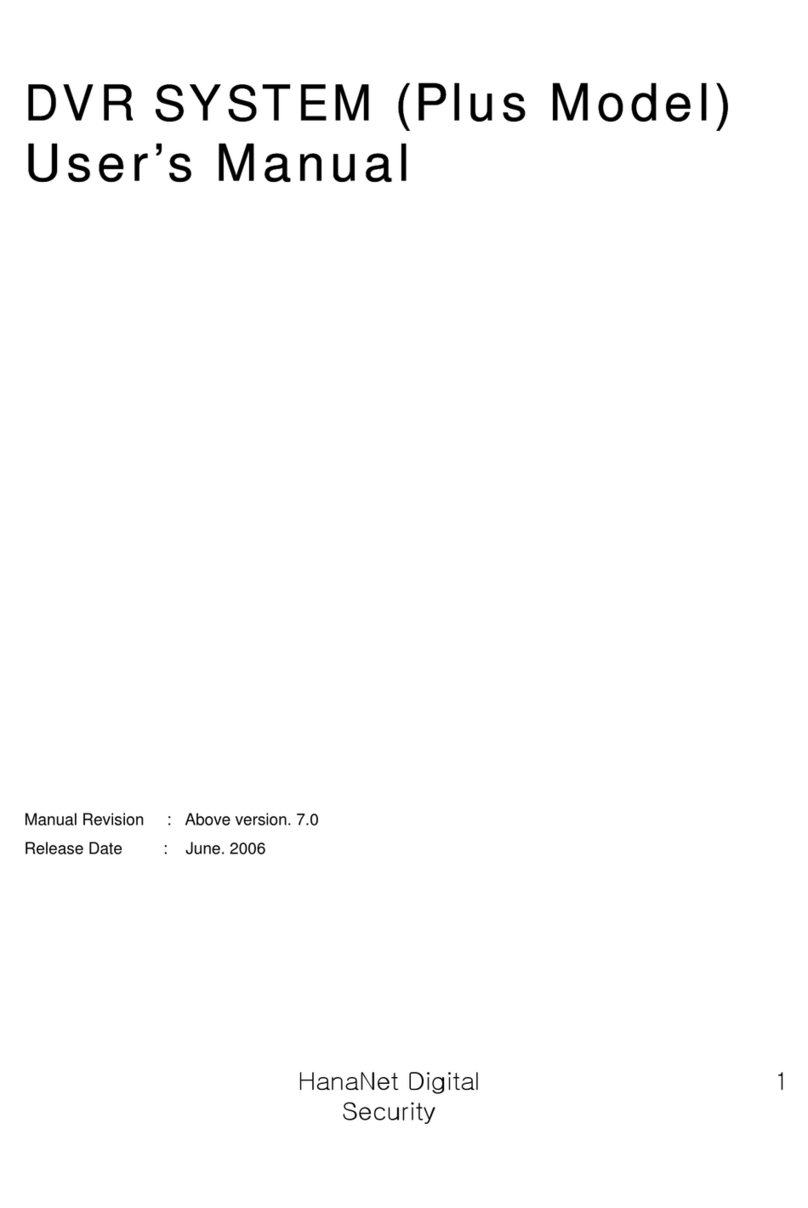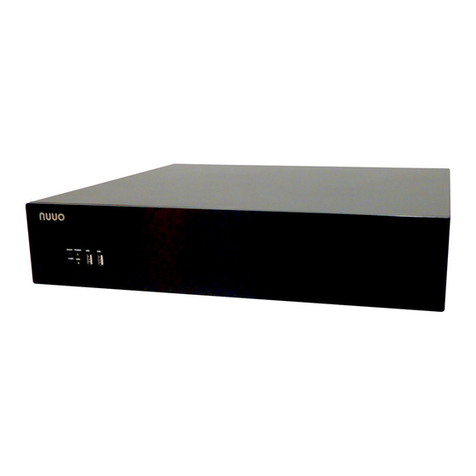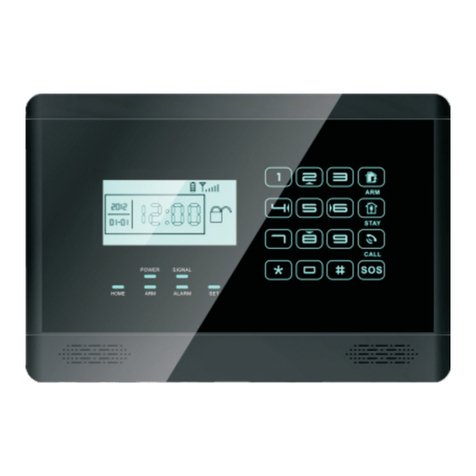Security Link SL150 Assembly instructions

6/
6HFXULW\6\VWHP
,QVWDOODWLRQDQG6HWXS*XLGH
123
654
897
0
*
#
OFF AWAY S TAY
MAX TEST BYPASS
INSTANT CODE CHIME
READY
ARMED
READY
123
654
897
0
*#
OFF AWAY S TAY
MAX TEST BYPASS
INSTANT CODE CHIME
READY
ARMED
READY
N7526–8V1 3/00

ii
.

iii
RECOMMENDATIONS FOR PROPER PROTECTION
The Following Recommendations for the location of Fire and Burglary Detection
Devices Help Provide Proper Coverage for the Protected Premises.
Recommendations for Smoke and Heat Detectors
With regard to the number and placement of smoke/heat detectors, we subscribe to the recommendations
contained in the National Fire Protection Association's (NFPA) Standard #72 noted below.
Early warning fire detection is best achieved by the installation of fire detection equipment in all rooms
and areas of the household as follows: For minimum protection, a smoke detector should be installed
outside of each separate sleeping area and on each additional floor of a multi-floor family living unit,
including basements. The installation of smoke detectors in kitchens, attics (finished or unfinished), or
in garages is not normally recommended.
For additional protection, the NFPA recommends that you install heat or smoke detectors in the living
room, dining room, bedroom(s), kitchen, hallway(s), attic, furnace room, utility and storage rooms,
basements, and attached garages.
In addition, we recommend the following:
• Install a smoke detector inside every bedroom where a smoker sleeps.
• Install a smoke detector inside every bedroom where someone sleeps with the door partly or
completely closed. Smoke could be blocked by the closed door. Also, an alarm in the hallway outside
may not wake up the sleeper if the door is closed.
• Install a smoke detector inside bedrooms where electrical appliances (such as portable heaters, air
conditioners, or humidifiers) are used.
• Install a smoke detector at both ends of a hallway if the hallway is more than 40 feet (12 meters) long.
• Install smoke detectors in any room where an alarm control is located, or in any room where alarm
control connections to an AC source or phone lines are made. If detectors are not so located, a fire
within the room could prevent the control from reporting a fire or an intrusion.
THIS CONTROL COMPLIES WITH NFPA REQUIREMENTS FOR
TEMPORAL PULSE SOUNDING OF FIRE NOTIFICATION APPLIANCES.
DINING KITCHEN BEDROOM
BEDROOM
BEDROOM
BEDROOM
LIVING ROOM
✪
✪
✪✪
✪
▲
▲
BEDROOM
BDRM
BDRM
DINING
LIVING ROOM
TV ROOM KITCHEN
■■■
✪
✪
✪
✪✪
✪
▲
✪
✪
✪
BEDROOM BEDROOM
TO
BR
■
■
■
■
■
LVNG RM
BASEMENT
KTCHN
▲
▲
.
CLOSED
DOOR GARAGE
▲
Smoke Detectors for Minimum Protection
Smoke Detectors for Additional Protection
Heat-Activated Detectors
Recommendations for Proper Intrusion Protection
For proper intrusion coverage, sensors should be located at every possible point of entry to a home or
commercial premises. This includes skylights and upper windows in a multi-level building.
In addition, we recommend that radio backup be used in a security system so that alarm signals can still be
sent to the alarm monitoring station in the event that the telephone lines are out of order (alarm signals are
normally sent over the phone lines, if connected to an alarm monitoring station).

Table of Contents
iv
Table of Contents
List of Figures .....................................................................................................................................................vii
Conventions Used In This Manual............................................................................................................... viii
SECTION 1 Introduction.................................................................................................................................1–1
General Description.........................................................................................................................................1–1
Features............................................................................................................................................................1–1
SECTION 2 Installing the Control.................................................................................................................2–1
Mounting the Cabinet .....................................................................................................................................2–1
Installing the Lock (if used)............................................................................................................................2–1
Mounting the Control's Circuit Board Alone in the Cabinet ........................................................................2–2
Mounting Control and RF Receiver Circuit Boards Together in the Cabinet .............................................2–2
Standard Phone Line Connections.................................................................................................................2–4
Wiring the AC Transformer............................................................................................................................2–5
Installing the Backup Battery ........................................................................................................................2–6
Earth Ground Connections .............................................................................................................................2–6
SECTION 3 Installing Remote Keypads.......................................................................................................3–1
Keypads That May Be Used............................................................................................................................3–1
Wiring to the Keypads.....................................................................................................................................3–1
Mounting the Keypads....................................................................................................................................3–2
Supplementary Power for Additional Keypads .............................................................................................3–2
Preliminary Checkout Procedure ...................................................................................................................3–3
SECTION 4 Basic Hardwired Zones 1–8 ......................................................................................................4–1
Installing the Hardwired Zones......................................................................................................................4–1
Remote Keyswitch (Zone 7).............................................................................................................................4–5
Programming Basic Hardwired Zones ...........................................................................................................4–8
Checkout Procedure for Hardwired Zones.....................................................................................................4–8
SECTION 5 Wired Zone Expansion...............................................................................................................5–1
Installing Zone Expansion Units....................................................................................................................5–1
Connections and Setup....................................................................................................................................5–1
Programming Wired Expansion Zones...........................................................................................................5–3
Checkout Procedure for Wired Expansion Zones ..........................................................................................5–3
SECTION 6 Wireless Expansion (5800 System)..........................................................................................6–1
About Wireless Expansion ..............................................................................................................................6–1
Installing the 5881/5882 Receiver ..................................................................................................................6–2
Installing the 5800TM Module .......................................................................................................................6–3
Jam Detection and Reporting .........................................................................................................................6–3
About 5800 Series Transmitters.....................................................................................................................6–3
Installing 5800 Series Transmitters...............................................................................................................6–7
SECTION 7 Relay Outputs & Powerline Carrier Devices.......................................................................7–1
About Relays and Powerline Carrier Devices................................................................................................7–1
4204 and 4229 Relay Modules ........................................................................................................................7–1
Powerline Carrier Devices ..............................................................................................................................7–3
Programming Relay Outputs..........................................................................................................................7–4

Table of Contents
v
SECTION 8 4285 & 4286 VIP Module ............................................................................................................8–1
About the 4285 & 4286 VIP Module...............................................................................................................8–1
Installing the Phone Module...........................................................................................................................8–1
Programming the 4285/4286 VIP Module......................................................................................................8–4
Checking 4285/4286 VIP Module Operation..................................................................................................8–4
SECTION 9 External Sounders......................................................................................................................9–1
Compatible Sounders.......................................................................................................................................9–1
NFPA Requirements........................................................................................................................................9–1
Sounder Connections and Power....................................................................................................................9–2
Sounder Supervision .......................................................................................................................................9–2
Testing the Sounder ........................................................................................................................................9–2
SECTION 10 Long Range Radio...................................................................................................................10–1
About Long Range Radio...............................................................................................................................10–1
Wiring Connections .......................................................................................................................................10–1
Dynamic Signaling Feature..........................................................................................................................10–2
SECTION 11 Audio Alarm Verification (AAV) Unit ................................................................................11–1
About Audio Alarm Verification ...................................................................................................................11–1
Wiring Connections .......................................................................................................................................11–1
SECTION 12 Final Power-Up........................................................................................................................12–1
Earth Ground Connections ...........................................................................................................................12–1
AC Power-Up .................................................................................................................................................12–1
Connecting the Backup Battery....................................................................................................................12–1
Battery Tests..................................................................................................................................................12–2
SECTION 13 Mechanics of Programming .................................................................................................13–1
About Programming ......................................................................................................................................13–1
Entering Program Mode................................................................................................................................13–2
Programming a Data Field............................................................................................................................13–2
Reviewing a Data Field/Erasing an Entry...................................................................................................13–2
Interactive Mode Programming (✱56, ✱58, ✱80, ✱81, ✱82).......................................................................13–2
Loading Factory Defaults..............................................................................................................................13–3
Programming System Setup Fields..............................................................................................................13–3
Exiting the Programming Mode ...................................................................................................................13–3
SECTION 14 Zone Response Type Definitions.........................................................................................14–1
Zone Type Definitions....................................................................................................................................14–1
SECTION 15 Data Field Descriptions.........................................................................................................15–1
Descriptions of System Data Fields..............................................................................................................15–1
SECTION 16 Zone Programming.................................................................................................................16–1
About Zone Programming.............................................................................................................................16–1
✱56 Zone Programming Procedures.............................................................................................................16–1
✱58 Expert Programming Mode Procedures ...............................................................................................16–4
To Remove a Zone..........................................................................................................................................16–6
To Delete a Transmitter Serial Number......................................................................................................16–7
To Enter and Duplicate Wireless Keys ........................................................................................................16–7
SECTION 17 Output Device Programming...............................................................................................17–1
Programming Options Defined.....................................................................................................................17–1
Programming Output Relays and Powerline Carrier Devices....................................................................17–3

Table of Contents
vi
SECTION 18 Zone Lists..................................................................................................................................18–1
About Zone List Menu Mode.........................................................................................................................18–1
Zone List Displays .........................................................................................................................................18–1
Pager 1 Reporting - Zone List 06..................................................................................................................18–2
Pager 2 Reporting - Zone List 07..................................................................................................................18–2
SECTION 19 Alpha Descriptor Programming..........................................................................................19–1
About Alpha Descriptor Programming.........................................................................................................19–1
Zone Descriptors............................................................................................................................................19–1
Programming Zone Descriptors (Program Menu Mode ✴82) .....................................................................19–1
Adding Custom Words...................................................................................................................................19–3
SECTION 20 Macros (SpeedKey).................................................................................................................20–1
About Macros .................................................................................................................................................20–1
Macro Key (Speedkey) Programming...........................................................................................................20–1
SECTION 21 Remote Programming and Control (Downloading) .......................................................21–1
About Remote Programming.........................................................................................................................21–1
Equipment Required .....................................................................................................................................21–1
Initial Download............................................................................................................................................21–2
Remote Programming Commands................................................................................................................21–2
Remote Programming Advisory Notes.........................................................................................................21–2
SECTION 22 System Communication.........................................................................................................22–1
Panel Communication with Central Station................................................................................................22–1
Report Code Formats.....................................................................................................................................22–1
SECTION 23 System Operation....................................................................................................................23–1
Security Codes ...............................................................................................................................................23–1
Keypad Functions..........................................................................................................................................23–2
SECTION 24 Testing the System .................................................................................................................24–1
Test Procedure...............................................................................................................................................24–1
SECTION 25 Troubleshooting Guide..........................................................................................................25–1
SECTION 26 Specifications & Accessories................................................................................................26–1
Specifications .................................................................................................................................................26–1
Accessories (Compatible Devices).................................................................................................................26–3
APPENDIX A 5800 RF System Wireless Transmitters.............................................................................A–1
5800 Series Transmitter Input Loop Identification......................................................................................A–1
APPENDIX B Regulatory Agency Statements...........................................................................................B–1
APPENDIX C Warnings and Limitations....................................................................................................C–1
Index.........................................................................................................................................................................3
Programming Form ......................................................................................................................................Insert

vii
List of Figures
Figure 1. Installing the Cabinet Lock.................................................................................................................2–1
Figure 2. Mounting the PC Board.......................................................................................................................2–2
Figure 3. Mounting the PC Board and RF Receiver Together in the Cabinet.................................................2–3
Figure 4. Telephone Line Connections...............................................................................................................2–4
Figure 5. Connections of 4300 Transformer to the Control Board ...................................................................2–5
Figure 6. Keypad Connections to the Control Board.........................................................................................3–2
Figure 7. Using a Supplementary Power Supply for Keypads .........................................................................3–3
Figure 8. 2-Wire Smoke Detector Connected to Zone 1.....................................................................................4–2
Figure 9. 4-Wire Smoke Detector Connections (Zones 2–7)..............................................................................4–3
Figure 10. Glassbreak Detector Connections to Zone 8.....................................................................................4–4
Figure 11. Keyswitch Wiring Without the 4300 Transformer ..........................................................................4–6
Figure 12 Keyswitch Wiring Without the 4300 Transformer..........................................................................4–6
Figure 13. Wiring Connections - 4219 Expansion Module................................................................................5–2
Figure 14. Wiring Connections - 4229 Expansion/Relay Module......................................................................5–2
Figure 15. 5881/5882 RF Receiver (cover removed)...........................................................................................6–2
Figure 16. 4229 Connections to Control Panel...................................................................................................7–2
Figure 17. 4204 Connections to Control Panel...................................................................................................7–3
Figure 18. 4300 Transformer Wiring Connections ............................................................................................7–4
Figure 19. 4285/4286 VIP Module Wiring Connections ....................................................................................8–3
Figure 20. Sounder Wiring..................................................................................................................................9–2
Figure 21. Long Range Radio Connections ......................................................................................................10–1
Figure 22. Connection of AAV Unit When Not Using a 4285/4286 VIP Module ...........................................11–2
Figure 23. Connection of AAV Unit When Also Using a 4285 or 4286 VIP Module......................................11–2
Figure 24. SL150 Summary of Connections..............................................................................Inside Back Cover

viii
Conventions Used In This Manual
Before you begin using this manual, it is important that you understand the meaning of the following
symbols:
ULA UL note includes specific information that must be followed if you are installing this system for a
UL Listed application.
A checked note includes information you should be aware of before continuing with the installation,
and which, if not observed, could result in operational difficulties.
This symbol warns of conditions that could seriously affect the operation of the system, or cause
damage to the system. Please read each warning carefully. This symbol also denotes warnings
about physical harm to the user.
Enter Zone Num.
(00 = Quit)
You may program many system options by responding to alpha keypad display
prompts. These prompts are shown in a double-line box.
✴00 When programming the system, data fields are indicated by a “star” (✴) followed by
the data field number.
PRODUCT MODEL NUMBERS: Unless noted otherwise, references to specific model numbers represent
Ademco products.

1–1
SECTION 1
Introduction
••••••••••••••••••••••••••••••••••••••••••••••••••
In This Section
♦General Description ♦Features
••••••••••••••••••••••••••••••••••••••••••••••••••
General Description
The SL150 is a security system control that supports up to 38 zones, including eight basic
hardwired zones (1 through 8) and a maximum of 30 expansion zones. These expansion zones
may include up to eight hardwired zones, or up to 30 wireless zones if hardwired zones are
not used. Three separate keypad-activated zones are also provided.
Features Basic Hardwired Zones
Provides 8 basic hardwired zones having the following characteristics:
• EOLR supervision supporting N.O. or N.C. sensors
• Programmable response time (10, 350, or 700 milliseconds)
• Up to sixteen 2-wire smoke detectors on zone 1
• 4-wire smoke or heat detectors on zones 2 through 7 (as many as can be powered
from AUX power on the control)
• Up to fifty 2-wire latching type glassbreak detectors on zone 8 with auto reset
Optional Expansion Zones (up to 30 total, wired and wireless)
Wired Expansion:
Supports up to 8 additional wired zones using a 4219 expansion module or 4229
expansion/relay module. These zones have the following characteristics:
• EOLR supervision supporting N.O. or N.C. sensors
• 300–500 msec normal response with an option for fast (10–15 msec) response on
loop A (first expansion zone)
Wireless Expansion:
Supports up to 30 wireless zones (less if using wired expansion zones).
• Requires the use of a 5881(5882 in Canada) type RF Receiver*,as follows:
Model 5881L/5882L Up to 8 zones
Model 5881M/5882M Up to 16 zones
Model 5881H/5882H Up to 30 zones
*Requires the use of 5800 series wireless transmitters
Remote Keypads
Up to 8 of any of the following keypads may be used in the installation:
Fixed-Word Keypads: SL6150 (Part No. 6150PL3), SL6150RF (Part No. 6150RFPL3)
Alpha Keypad: SL6160 (Part No. 6160PL3)
For programming from a keypad, an SL6160 2-line Alpha keypad must be connected, but need not
remain in the system after programming has been completed.

SL150 Installation and Setup Guide
1–2
Security Codes
• One Installer code for entire system (user 1)
•OneMastercodefor entire system (user 2)
• 12 Secondary User codes (users 3–14)
• One Babysitter code (user 15).
• One Duress Code (user 16).
Baby-sitter Code: A special code that can only be used to disarm the system if that particular
code (or the installer code) was used to arm it. Generally assigned to a babysitter or cleaner.
Duress Code: An emergency code that, when entered by
any
user, will send a silent duress
message to the Central Station. Note: A report code must be programmed otherwise it will be
reported as user 16 only.
Keypad Panic Keys
• Up to 3 programmable panic key pairs provided
• Designated as zones 95, 96, 99
• Activated by wired and wireless keypads
• Distinguished by subscriber ID number.
Zone Monitor Features
• The control will sense a high resistance or short in the loops on hardwired zones
2–8 if present, and will display a trouble (CHECK) message (rather than an alarm)
for the affected zone when the system is in the disarmed mode. The system cannot
be armed as long as this condition is present.
• Also sends a Trouble message to the Central Station when the system is in the
disarmed mode.
Exit Error False Alarm Prevention Feature
• Enables the system to determine the difference between an actual alarm and an
alarm caused by leaving an entry/exit or interior zone open after the Exit Delay
expires. If not disarmed in time, an alarm will sound and an Exit Error report will
be sent to the Central Station.
An exit alarm condition will also occur if an entry/exit or interior zone re-opens
within 2 minutes after the end of an Exit Delay.
Exit Restart Feature
•The system contains an Exit Restart feature which allows the user to restart the
exit delay at any time when arming in the STAY or INSTANT modes by simply
pressing the [✱] key. This is useful if the user wishes to open the entry/exit door to
let someone in after arming the system, and avoids having to disarm the system
and then re-arm it again. This feature allows only one restart of the exit delay
time for each arming session. This feature will be enabled when an “8” or greater
value is entered in field ✱91.
Optional Output Relays and Powerline Carrier Devices (X10 type)
• Maximum of 4 Output Devices
• Up to 4 relays using one 4204 Relay Module
•Up to 2 relays using one 4229 Zone Expansion/Relay Module
• Up to 8 Powerline Carrier devices (you must subtract the number of relay outputs
actually used by the 4204 or 4229 modules, if used)
• Actions programmable to respond to zone activity or manual keypad entries.
Powerline Carrier devices require the use of the optional 4300 Transformer Module instead of the
supplied 1321 AC Transformer.

Section 1 - Introduction
1–3
Optional Phone Module
• Supports the Ademco 4285/4286 VIP Module (refer to Section 8 for further
information).
• Provides access to the system via on-premises or off-premises phones for arming,
disarming, etc., plus control of relay outputs and Powerline Carrier devices.
Paging Feature
If programmed, the paging feature allows certain system conditions to be reported
to two pagers, if desired. Up to 16 digits may be programmed to be sent as a user-
determined message to each pager. A system-generated 7-digit code following the
programmed message indicates the type of condition that has occurred, as well as
the user number or zone number of the occurrence.
Audio Alarm Verification (AAV) Option
• Provides a programmable Audio Alarm Verification (AAV) option, which can be
used in conjunction with an output relay to permit voice dialog between an
operator at the Central Station and a person at the premises.
• Requires the use of optional AAV unit, such as Eagle Model 1250.
ULThe AAV option may not be used in UL installations.
Optional Long Range Radio
Allows all messages that have been programmed to go to the primary telephone
number to be reported additionally to an ECP radio.
Built-in Telephone Line Monitoring Option
You can monitor telephone line voltage to supervise the phone line connection. You
must connect the panel to a proper earth ground or you will get a false line cut
indication if this feature is enabled.
The loss of the line can optionally cause a local display, or a display and trouble
sound.
Event Logging
Keeps a record of up to 48 selected events in a history log. All control and readout
from the log is done via ADEMCO COMPASS software only.
Macro (Speed Key) Programming
The “C” key on an Alpha keypad can be programmed to perform a series of
commands consisting of up to 16 keystrokes. Pressing the “C” key will then perform
a series of automatically initiated commands (called macros). Typical speed key
functions could include arming sequences that first involve bypassing certain zones,
relay activation sequences, etc.
Up to two (2) macros can be programmed for the system. User codes are then
assigned to one of the macro sequences when they are entered into the system.
Pressing the “C” key will intiate the macro, but then the system will prompt for the
entry of a user code to determine which macro to perform.
Single-Key Paging
When pressed, the D key on an alpha keypad will send a code message to a pager
which will display “Page in progress”on the keypad until the the page is completed.
The code displayed on the pager is always 999–9999, and can signify ANY message
that the user and recipient have previously decided upon, such as “return to the office
at once”, “call home immediately”, etc. Single-key paging using a wireless key fob, can
also be used, but sends a code which displays 999–9998 on the pager.

SL150 Installation and Setup Guide
1–4
Dynamic Signaling Feature
This control features Dynamic Signaling Delay and Dynamic Signaling Priority
message reporting when Long Range Radio is used. This feature, which is
programmed in data fields ✱54 and ✱55, is designed to reduce the number of
redundant reports sent to the central station. Field ✱29, OUTPUT TO LONG
RANGE RADIO, must be enabled for this feature to function.
Alarm Output
• Provides a 12VDC, 2 amp output that can drive the compatible sounders listed in
Section 9: External Sounders (assuming a fully charged battery is connected).
• Steady output for burglary/panic, or temporal pulse output (3 pulses – pause – 3
pulses – pause – 3 pulses . . .) for fire.
• Uses current-limiting circuitry for protection.
Auxiliary Power Output
• Provides 12VDC, 600mA maximum (500mA max for UL installations). Uses
current-limiting circuitry for protection.
• Interrupts for smoke detector reset if 4-wire smoke detectors are used.
Programming
Programmed options are stored in electrically erasable, nonvolatile EEPROM
memory (information can be reprogrammed at any time and will not be lost in the
event of a power loss).
The system can be uploaded, downloaded, or controlled via an IBM-compatible
computer, ADEMCO COMPASS®software, and a modem specified by ADEMCO.
Keypad programming consists of:
• Data field programming
• Interactive (menu) mode programming
To program from a keypad, you must connect an SL6160 (2-line alpha keypad), but it need not
stay in the system.
Communication Formats Supported
• Ademco Low Speed (Standard or Expanded)
• Sescoa/Radionics (Standard or Expanded)
• Ademco Express
•Ademco
Contact ID.
Zone Descriptors
You can assign alpha descriptors to all zones (only when using alpha keypads and/or
the 4285/4286 VIP Module).
AC Power Supply
Uses 1321, 110VAC plug-in transformer with 16.5VAC 25VA output, unless
Powerline Carrier devices (for example, X10 type) are used, in which case a 4300
Transformer Module must be used.
Backup Battery
Rechargeable (Sealed Lead Acid) 12VDC, 4AH minimum. The actual battery size
needed can be determined by using the formula found in Section 12, FINAL POWER-
UP (see “Calculating the Battery Size Needed”).

2–1
SECTION 2
Installing the Control
••••••••••••••••••••••••••••••••••••••••••••••••••
In This Section
♦Mounting the Cabinet
♦Installing the Lock
♦Mounting the Control's Circuit Board Alone in
the Cabinet
♦Mounting the Control and RF Receiver Circuit
Boards Together
♦Standard Phone Line Connections
♦Wiring the AC Transformer
♦Installing the Backup Battery
♦Earth Ground Connections
••••••••••••••••••••••••••••••••••••••••••••••••••
Mounting the Cabinet
Using fasteners or anchors (not supplied) to mount the control cabinet to a sturdy wall in a
clean, dry area that is not readily accessible to the general public. Four mounting holes are
provided at the back of the cabinet.
If an RF receiver is being used and you intend to mount its PC board within the cabinet, note
the following:
• Do not mount the cabinet on or near metal objects. This will decrease RF range and/or
block RF transmissions from wireless transmitters.
• Do not locate the cabinet in an area of high RF interference (revealed by frequent or
prolonged lighting of the LED in the receiver after it is operational (random flicker is OK).
Installing the Lock (if used)
Use an Ademco No. N6277 Cam Lock and No. N6277–1 Push-On Clip (Retainer Clip).
NOTE: The cabinet can be closed and secured without a lock by using 2 screws in the
cover's edge.
To install the lock, perform the following steps:
1. Remove the cabinet door. It is easily
removed for servicing and is easily re-
installed.
2. Remove the lock knockout from the
control cabinet door. Insert the key into
the lock. Position the lock in the hole,
making certain that the latch will make
contact with the latch bracket when the
door is closed.
3. Hold the lock steady and insert the
retainer clip into the retainer slots.
Position the clip as illustrated in order to
permit easy removal.
Figure 1. Installing the Cabinet Lock
CABINET DOOR BOTTOM
RETAINER
CLIP
RETAINER CLIP
(NOTE POSITION)
RETAINER
SLOTS
LOCKED
UNLOCKED

SL150 Installation and Setup Guide
2–2
Before installing the cabinet's contents, remove the metal cabinet knockouts required for wiring
entry. Do not attempt to remove the knockouts after the circuit board has been installed.
Mounting the Control's Circuit Board Alone in the Cabinet
To mount the circuit board alone in the cabinet, follow these steps:
1. Hang two short natural-colored mounting clips (provided) on the raised cabinet tabs (see
Detail B in Figure 2).
2. Insert the top of the circuit board into the slots at the top of the cabinet. Make sure that
the board rests on the correct row (see Detail A).
3. Swing the base of the board into the mounting clips and secure the board to the cabinet
with the accompanying screws (see Detail B).
CABINET
+
+
CIRCUIT
BOARD
CABINET
CIRCUIT
BOARD
DETAIL B
SIDE VIEW OF
SHORT
MOUNTING CLIPS
DETAIL A
SIDE VIEW
OF BOARD --
SUPPORTING SLOTS
Figure 2. Mounting the PC Board
Mounting Control and RF Receiver Circuit Boards Together in the Cabinet
To mount the control and RF receiver boards together in the cabinet, do the following:
1. Hang two short (black) mounting clips (provided with receiver) on the raised cabinet tabs,
as shown in Detail B in Figure 3.
2. Insert the top of the receiver board (removed from its own case as described in its
instructions) into the slots at the top of the cabinet, as shown in Detail A in Figure 3.
Make sure that the board rests on the correct row of tabs, as shown.
3. Hang two short (black) mounting clips (provided with receiver) on the raised cabinet tabs,
as shown in Detail B in Figure 3.
4. Insert the top of the receiver board (removed from its own case as described in its
instructions) into the slots at the top of the cabinet, as shown in Detail A in Figure 3.
Make sure that the board rests on the correct row of tabs, as shown.

Section 2 - Installing the Control
2–3
5. Swing the base of the board into the mounting clips and secure it to the cabinet with the
accompanying screws (see Detail B).
6. Insert the top of the control's board into the slot in the clips and position two long (red)
clips at the lower edge of the board (see Detail C).
7. Swing this board into place and secure it with two additional screws.
8. Insert grounding lugs (supplied with the receiver) through the top of the cabinet into the
left-hand terminals of the antenna blocks (at the upper edge of the receiver board). Secure
the grounding lugs to the cabinet top with the screws provided, as shown in Detail D.
9. Insert the receiver's antennas through the top of the cabinet, into the blocks' right-hand
terminals, and tighten the screws.
10. Refer to Section 6: Wireless Expansion (5800 System) for receiver setup and wiring
instructions.
LONG
MOUNTING
CLIPS
CABINET
DETAIL D
ANTENNA AND GROUNDING LUG INSTALLATION
ANTENNA
MOUNT
(2 PLACES)
ANTENNA
(2)
SCREW
(2)
SHORT
MOUNTING
CLIPS
CONTROL
CIRCUIT
BOARD
BOARD
SUPPORTING
SLOTS
HOLES FOR ANTENNAS
AND GROUNDING LUGS
RECEIVER CIRCUIT BOARD
(See Detail D)
++
++
RCVR BRD
DETAIL A
SIDE VIEW
OF BOARD --
SUPPORTING SLOTS
CIRCUIT
BOARD CABINET
DETAIL B
SIDE VIEW OF
SHORT
MOUNTING CLIPS
DETAIL C
SIDE VIEW
OF LONG
MOUNTING CLIPS
GROUNDING
LUG
(2)
Figure 3. Mounting the PC Board and RF Receiver Together in the Cabinet

SL150 Installation and Setup Guide
2–4
Standard Phone Line Connections
The wiring connections shown here are not applicable if the4285/4286 VIP Module is used. Refer
to
Section 8: 4285/4286 VIP Module
for information regarding phone line connections, which are
different than those shown here.
Incoming phone line and handset wiring is connected to the main terminal block (via an
RJ31X jack) as follows and shown in Figure 4:
Term. 21: Local Handset (TIP – Brown*)
Term. 22: Local Handset (RING – Gray*)
Term. 23: Incoming Phone Line (TIP – Green*)
Term. 24: Incoming Phone Line (RING – Red*)
* Colors of wires in Direct Connect Cord.
Figure 4. Telephone Line Connections
TERMINALS
ON CONTROL
EARTH GROUND
INCOMING TELECOM LINE
Handset
TIP
RING
RJ31X
JACK
PLUG
DIRECT
CONNECT
CORD
TIP
RING
GROUND
PREMISES
PHONES
{
{
BROWN (TIP)
GREY (RING)
GREEN (TIP)
RED (RING)
21 22 23 24 25
Incoming
Telecom Line
IMPORTANT!
IF THE PANEL IS NOT CONNECTED TO A
PROPER EARTH GROUND, YOU MAY GET
FALSE TELEPHONE LINE CUT INDICATIONS
(IF THE TELEPHONE LINE MONITOR HAS
BEEN PROGRAMMED IN FIELD 92).

Section 2 - Installing the Control
2–5
Wiring the AC Transformer
1321 Transformer
Wire the 1321 Transformer to terminals 1 and 2 on the control board. See wiring table below
to determine wire gauge.
Use caution when wiring the transformer to the control panel to guard against blowing the
fuse inside the transformer (the fuse is nonreplaceable).
4300 Transformer
If you are going to use a 4300 Transformer Interface (required if Powerline Carrier devices
will be used), connect the 4300 Transformer’s terminals as follows:
1. Connect terminals 1, 3 (AC), and 2 (Ground) to control board terminals 1, 2, and 25,
respectively (see Figure 5). See table below to determine wire gauge to use.
WIRING TABLE
Distance of Transformer
From the Control Panel Wire Gauge
to Use
Up to 50 feet # 20
50-100 feet # 18
100-250 feet # 16
Wiring to the AC transformer must not exceed 250 feet using 16-gauge wire. The voltage reading
between terminals 1 and 2 of the control must not fall below 16.5VAC, or an AC LOSS message
will be displayed.
Do not plug the transformer into the AC outlet until you are instructed to do so later in the manual.
2. Wire the other three terminals (Sync, Data, Com) on the 4300 Transformer. Wires from
these terminals must be connected to a 9-pin connector on the control board (using a
4142TR Cable supplied with the 4300 Transformer), as shown in Figure 5. These
particular wires can be 24-gauge or larger, and can be run along with the AC and ground
wires to the control panel.
Figure 5. Connections of 4300 Transformer to the Control Board
123456789 9-PIN CONNECTOR
ON CONTROL BOARD
BLACK
BLUE
BROWN
GREEN
RED
WHITE
YELLOW
GRAY
VIOLET
4142TR CABLE
123456
125 2
AC Earth
GroundAC SyncData Com
4300 TRANSFORMER/INTERFACE
TERMINALS
ON CONTROL
BOARD
THESE WIRES (7, 8, 9) NOT USED

SL150 Installation and Setup Guide
2–6
Installing the Backup Battery
If necessary, refer to Section 12: Final Power-Up for information regarding battery size to
use.
Do not attach the connector cable to the battery terminals until you are instructed to do so later in
the manual.
Install the backup battery as follows:
1. Place the 12-volt backup battery in the control cabinet.
2. Attach red and black wires on the battery connector cable as follows:
a. Red to the positive (+) battery terminal on the control board (see Figure 24. SL150
Summary of Connections for location, if necessary).
b. Black to the negative (–) battery terminal on the control board.
ULUse a 4AH battery or larger for UL installations.
Earth Ground Connections
The designated earth ground terminal (25) must be terminated in a good earth ground for
the lightning transient protective devices in this product to be effective. The following are
examples of good earth grounds available at most installations:
Metal Cold Water Pipe:
Use a noncorrosive metal strap (copper is recommended) firmly secured to the pipe to which
the ground lead is electrically connected and secured.
AC Power Outlet Ground:
Available from 3-prong, 120VAC, power outlets only. To test the integrity of the ground
terminal, use a 3-wire circuit tester with neon lamp indicators, such as the UL Listed Ideal
Model 61-035, or equivalent, available at most electrical supply stores.

3–1
SECTION 3
Installing Remote Keypads
••••••••••••••••••••••••••••••••••••••••••••••••••
In This Section
♦Keypads That May Be Used
♦Wiring to the Keypads
♦Mounting the Keypads
♦Supplementary Power for Additional Keypads
♦Preliminary Checkout Procedure
••••••••••••••••••••••••••••••••••••••••••••••••••
Keypads That May Be Used
Up to 8 keypads may be used in the system, independent of auxiliary power considerations
(you may need to use an auxiliary power supply if the 600mA aux. output is exceeded).
The following keypad models may be used:
Fixed-Word Keypads: Models SL6150 (Part No. 6150PL3), SL6150RF (Part No. 6150RFPL3)
Alpha Keypad: Model SL6160 (Part No. 6160PL3)
Note: When ordering keypads, order by part number, not model number.
If you are going to use a 4285 or 4286 VIP Module, you MUST use an addressable keypad
(SL6150, SL 6150RF, or SL 6160) set to the non-addressable mode (address 31).
Wiring to the Keypads
To wire keypads to the control, perform the following steps:
1. Determine wire gauge by referring to the Wiring Run Chart below.
For devices (keypads, RF receivers, zone expander, etc.) connected to a single 4-wire run,
determine the current drawn by all units connected to the single wire run, then refer to
the Wiring Run Chart below to determine the maximum wire length that can be safely
used for each wire size. Current draw for all devices can be found in Section 26:
Specifications & Accessories.
Note: Refer to Table 1. AUXILIARY DEVICE CURRENT DRAW WORKSHEET in
Section 12: Final Power-Up to obtain the current draw for all keypads.
Maximum wire lengths for any device that is home run to the control can also be determined from
the Wiring Run Chart, based on the current draw of that device alone.
Wiring Run Chart for Devices* Drawing Aux Power from the Control (12V+ & 12V–)
TOTAL CURRENT DRAWN BY ALL DEVICES CONNECTED TO A SINGLE WIRE RUN
Wire
Size 50mA or less 100mA 300mA 500mA 600mA
#22 500 ft (152m) 250 ft (76m) 80 ft (24m) 50 ft (15m) 42 ft (13m)
#20 750 ft (228.6m) 380 ft (116m) 130 ft (39.6m) 80 ft (24m) 67 ft (20.4m)
#18 1300 ft (396m) 650 ft (198m) 220 ft (67m) 130 ft (39.6m) 115 ft (35m)
#16 1500 ft (457m) 1000 ft (305m) 330 ft (100.5m) 200 ft (70m) 170 ft (52m)
* Includes Keypads, RF Receivers, Zone Expander/Relay Units, or 4285/4286 VIP Module.

SL150 Installation and Setup Guide
3–2
The length of all wire runs must not exceed 1500 feet (457m) when unshielded quad conductor
cable is used (750 feet if shielded cable is used). This restriction is due to the capacitive effect on
the data lines when quad cable is used.
2. Run field wiring from the control to the keypads (using standard 4-conductor twisted wire
cable of the wire gauge determined in step 1).
3. Connect remote keypads to terminals 4, 5, 6, and 7 on the control board, as shown in
Figure 6.
KEYPAD
BLACK
RED
GREEN
YELLOW
4
5
6
7
CONTROL
TERMINALS
Figure 6. Keypad Connections to the Control Board
Mounting the Keypads
To mount the keypads, perform the following steps:
1. Make sure all keypads are set to the non-addressable mode (address 31), which is the
factory default setting. Refer to the instructions provided with the keypad for address
setting procedure.
2. Mount the keypads at a height that is convenient for the user. Refer to the instructions
provided with the keypad for mounting procedure.
You can either surface mount or flush mount keypads (using an appropriate Trim Ring
Kit: 6139TRK). Refer to the mounting instructions and template included with the keypad
and/or trim ring kit for specific information.
Supplementary Power for Additional Keypads
The control provides 600mA (500mA max for UL) for powering keypads (up to 8) and other
devices from the auxiliary power output. The backup battery will supply power to these
keypads in the event that AC power is lost.
When the control’s auxiliary power load for all devices exceeds 600 mA (500mA max for UL),
you can power additional keypads from a regulated 12VDC Power Supply (e.g., 487-12
supplies 12V, 250mA; 488-12 supplies 12V, 500mA). Use a UL Listed, battery-backed supply
for UL installations.
The 487–12/488–12 power supplies contain a backup battery that can power these keypads in
the event of AC power loss to the main supply.
Keypads powered from supplies that do not have a backup battery will not function when AC
power is lost. Therefore, be sure to power at least one keypad from the control's auxiliary power
output.
Connect the additional keypads as shown in Figure 7, using the keypad wire colors shown. Be
sure to observe the current ratings for the power supply used.
Table of contents
Popular Security System manuals by other brands
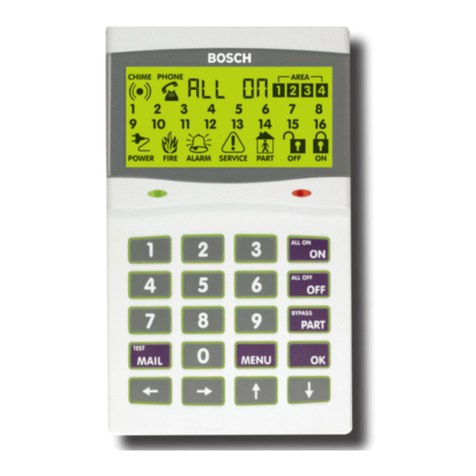
Bosch
Bosch Solution 16plus user guide
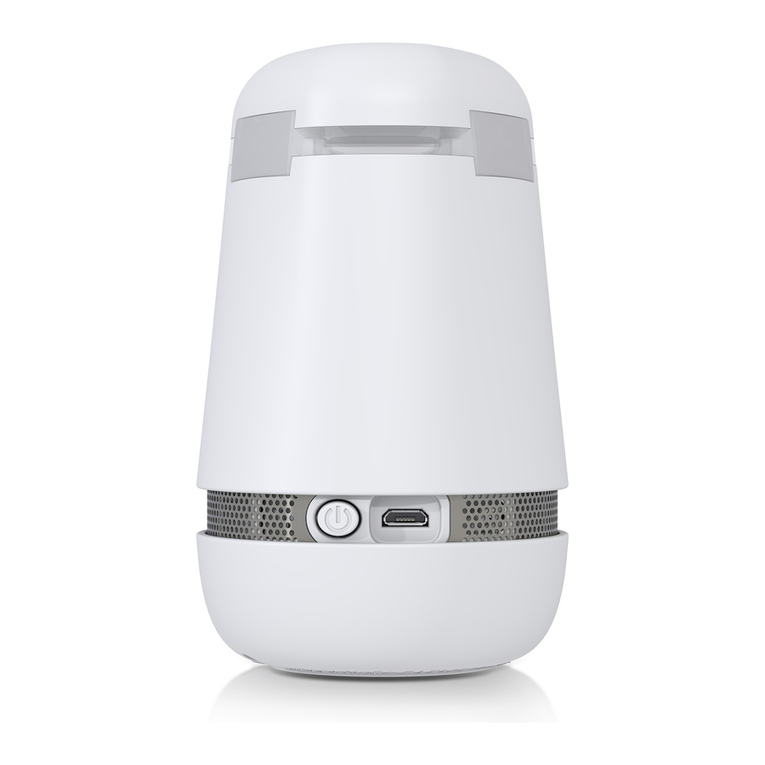
Bosch
Bosch Spexor Original instructions

Fortinet
Fortinet FortiWLC 3000D quick start guide
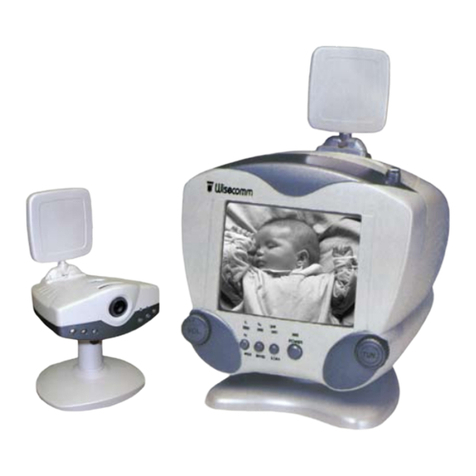
Clover
Clover WW2000 Specifications
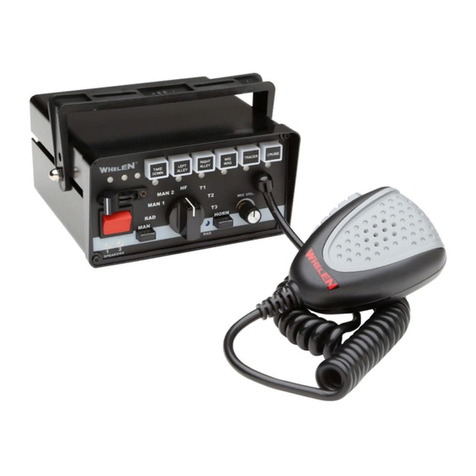
Whelen Engineering Company
Whelen Engineering Company 295SLSA5 installation guide

GARDINER TECHNOLOGY
GARDINER TECHNOLOGY GARDTEC Step By Step User Guide
